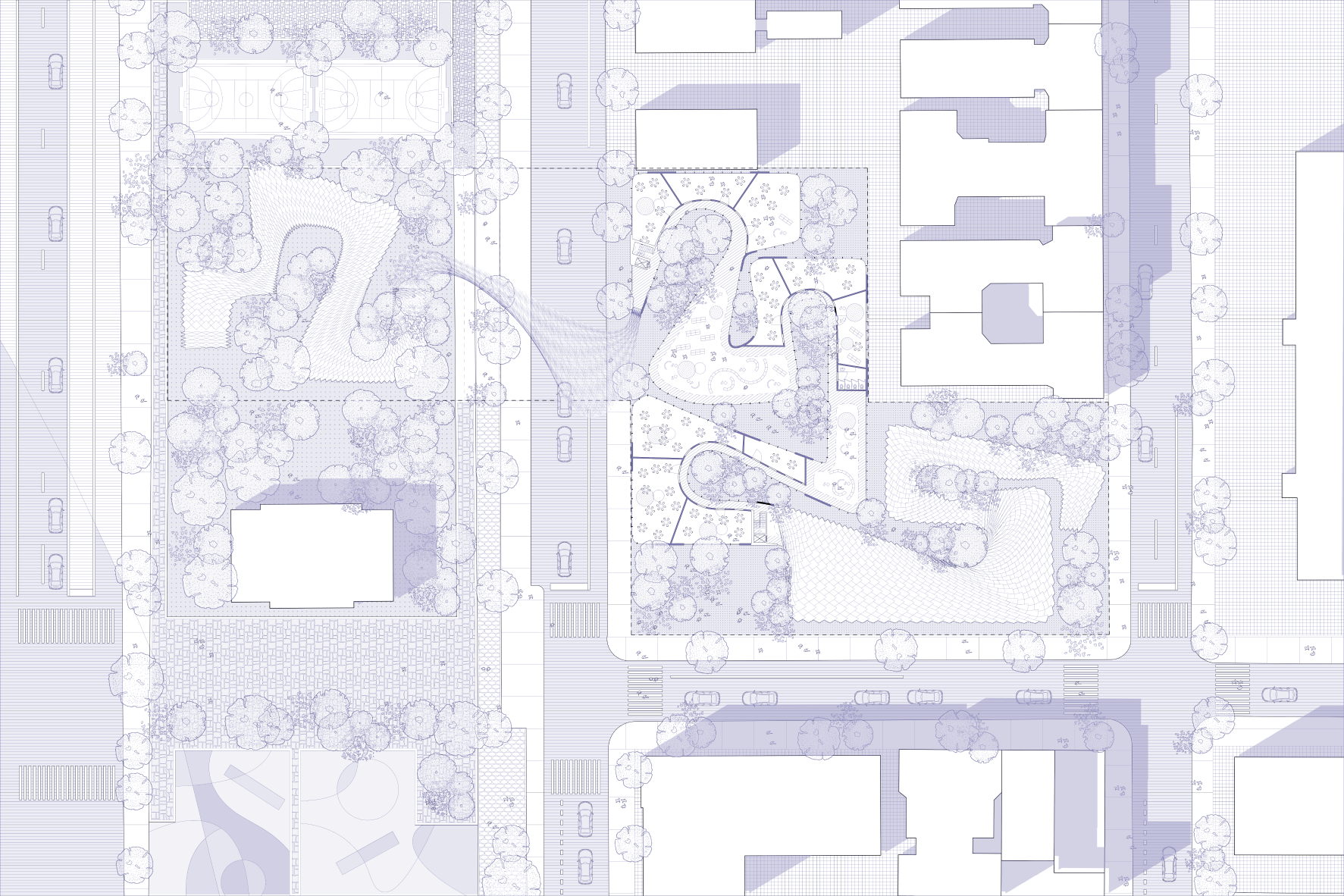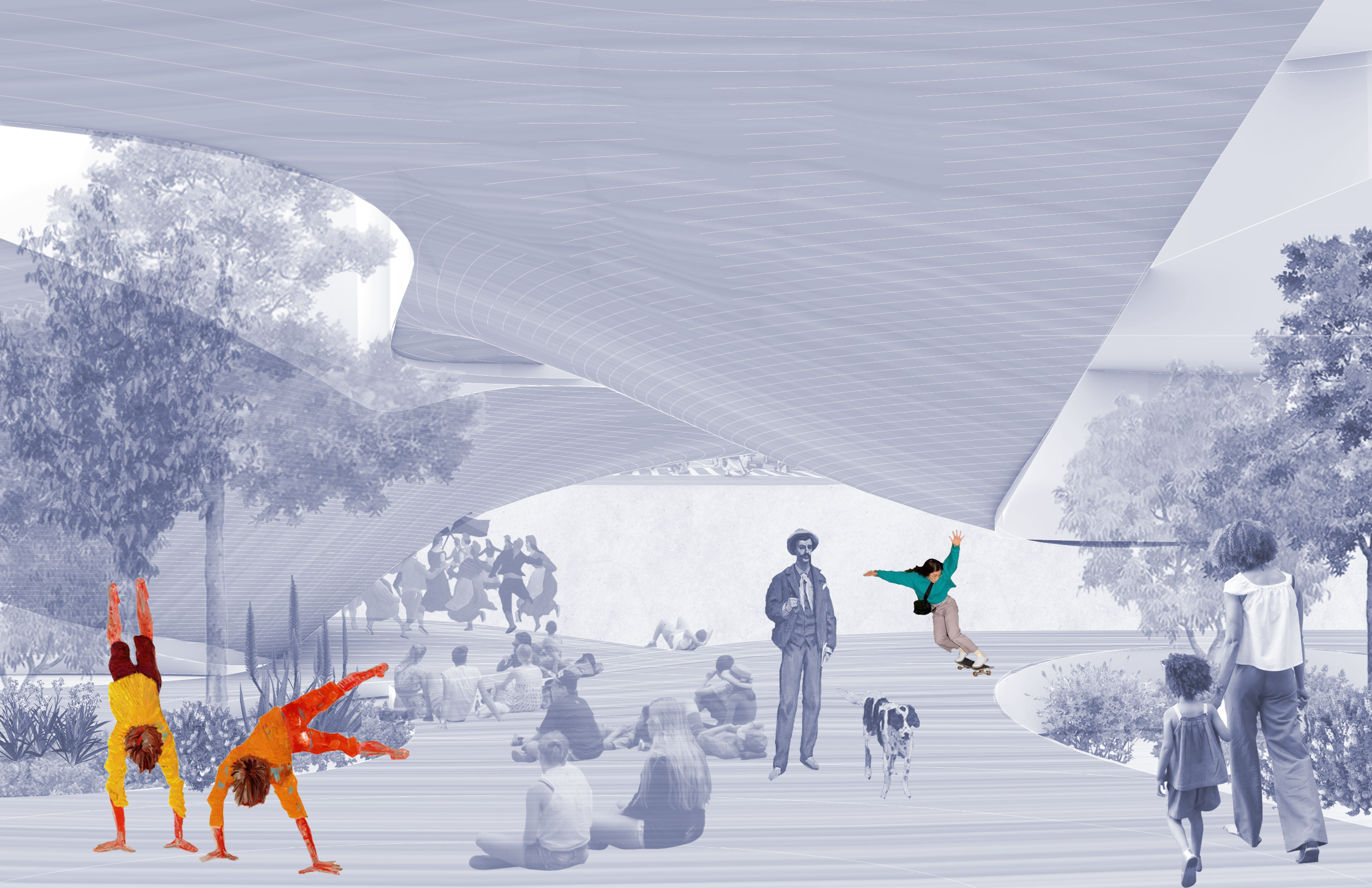a school: a silent music school in a noisy new york
Professor: Karla Rothstein
Term: Spring 2022, GSAPP
Location: New York, New York
Classroom acoustics significantly influence the well-being of early education students. According to Maria Klatte’s 2010 study on classroom architecture, inadequate acoustic design leads to disruptive noise, negatively impacting learning, speech perception, student behavior, and education outcomes. Conversely, effective acoustic design minimizes noise pollution and creates purposeful amplification spaces. The “Silent Soundscape” employs three variables—ceiling height, surface treatment, and landscaping—to both mitigate excessive noise and amplify sound selectively. This involves purposefully adjusting ceiling height based on sound diffusion or amplification needs. Aluminum panels in the architecture disrupt sound waves, enhancing resonance (Sokol, Soundproofing). The design creates quiet classrooms for focused learning, while designated spaces like the amphitheater, dance studio, and music hall amplify sound for a richer experience. In summary, the “Silent Soundscape” aims to optimize learning environments in classrooms and celebrate sound as a meticulously crafted resonant experience.






















